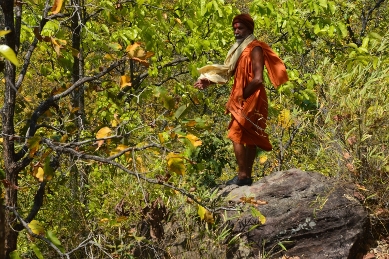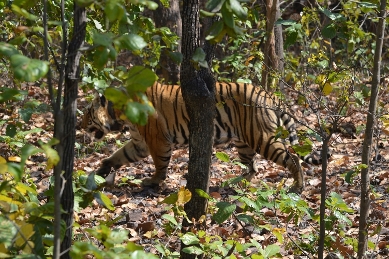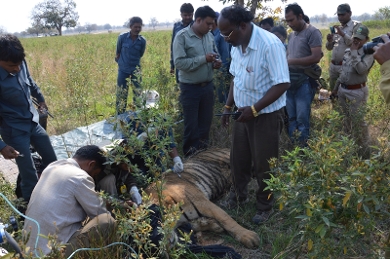PhD project
Can large carnivores like tigers survive in multiple use forests? A study in the buffer zone of Panna Tiger Reserve, India.
Which factors (human-dimension and carnivore related) shape human tolerance of large carnivore and large carnivore survival in multiple use forests?
- Duration
- 2013 - 2017
- Contact
- Shekhar Kolipaka
- Partners

Short abstract
Large carnivores are able to survive in multiple use forests of India but in most cases it is a case of co-occurrence than coexistence of humans and large carnivores. In rural areas of India may lie some time tested answers that illustrate how coexistence is shaped and sustained.
Project description
To answer whether large carnivores like tigers can survive in multiple use forests we conduct the following 4 main investigations and synthesise them to answer the study topic:
- How do human practices (grounded in religion, culture and habit) influence carnivores? (here the orientation is how to address change if change is linked to deep rooted factors like religion)

The God Man or Religious Leader who saved the life of a tiger that roamed into human areas near Panna. Such people are an important link in tiger conservation in countries like India
- How do rural Indian pastoralists cope with threats from large carnivore predation on livestock? A study of livestock herding and corralling strategies. (How and can we take advantage of existing knowledge of rural people (if they are solutions) and adapt them at a larger landscape level to cope with carnivores)
- Why and Where do tiger and human movement overlap in a multiple use forest? (When there are no human causalities or tiger causalities in spite of co-occurrence of the two in the same forest. What can we learn from such a scenario?)

Tiger P212 in Sanjay forest
- What is the diet of tiger using multiple use forests. (What is the contribution of anthropogenic food sources and wild food sources in the diet of the tiger. Can they adapt and survive purely on anthropogenic food sources? Or can they adapt and consume small wild animals in the absence of large prey?)

Tranquilization operation for collaring the tiger
Investigations 1 and 2 have social science orientation and 3 and 4 have animal biology orientation.
This study is a joined cooperation between Faculty of Social Sciences and the Institute of Environmental Sciences. Together they are specialized in this integrated sciences that also has applied usages.
By integrating social and natural sciences and adopting an integrated approach to conservation people become part of the solution rather than a barrier to conservation. Integrated approach is the only way to manage wildlife in populated countries like India where the future of wildlife rests in conserving them in multiple use landscapes.
Other predator in the area: the wolf.
